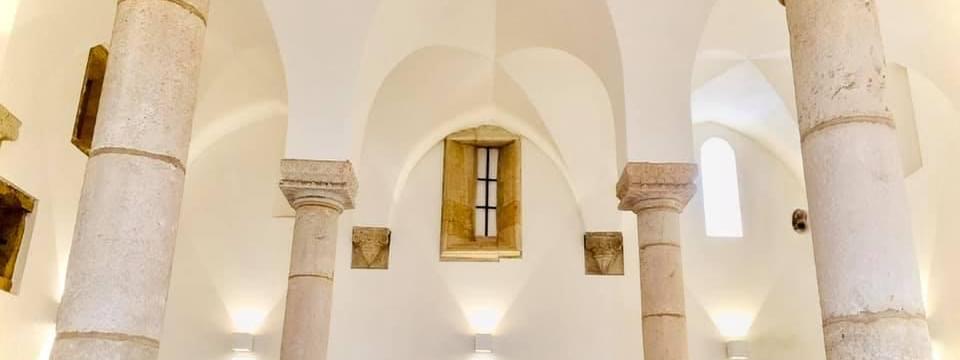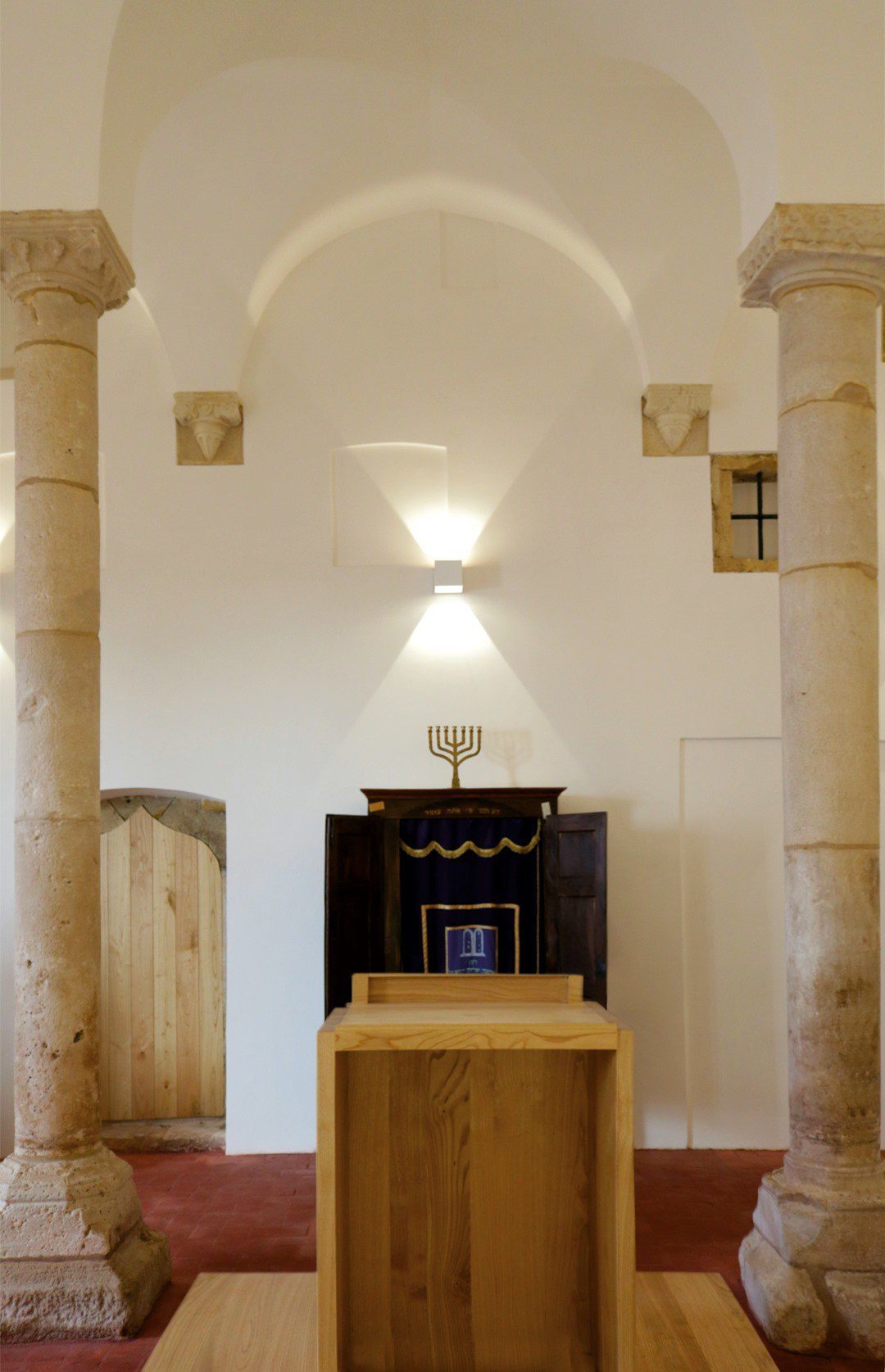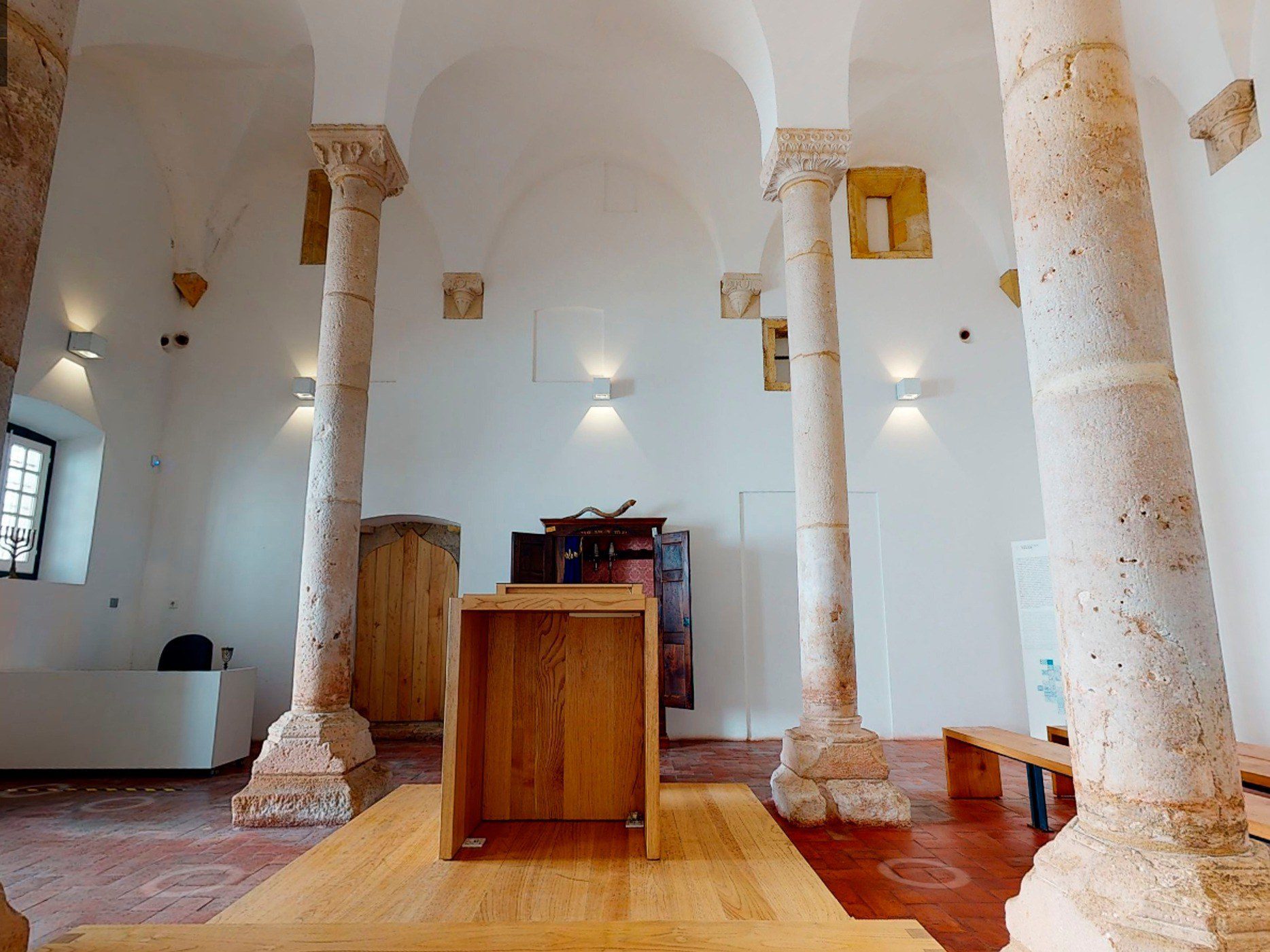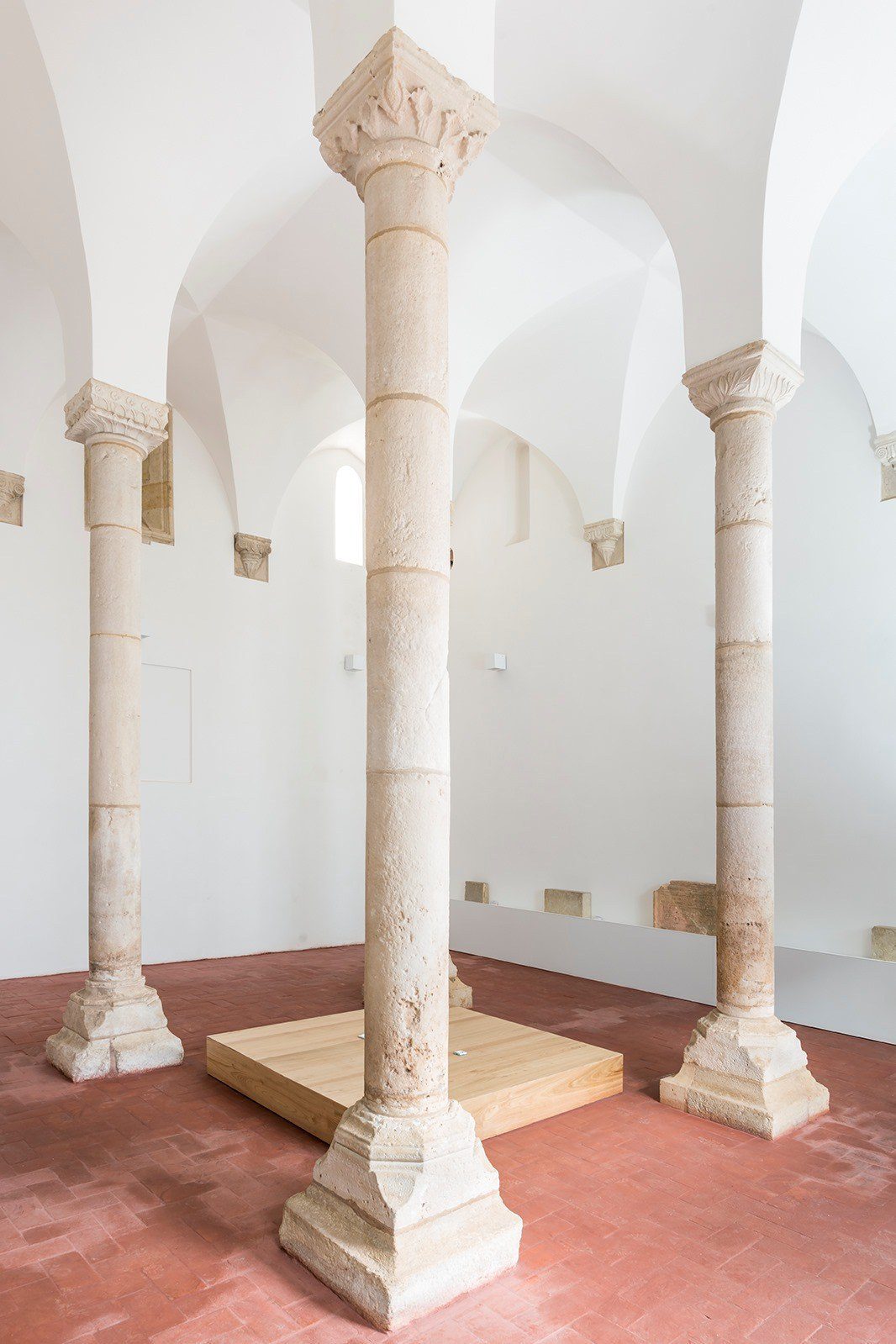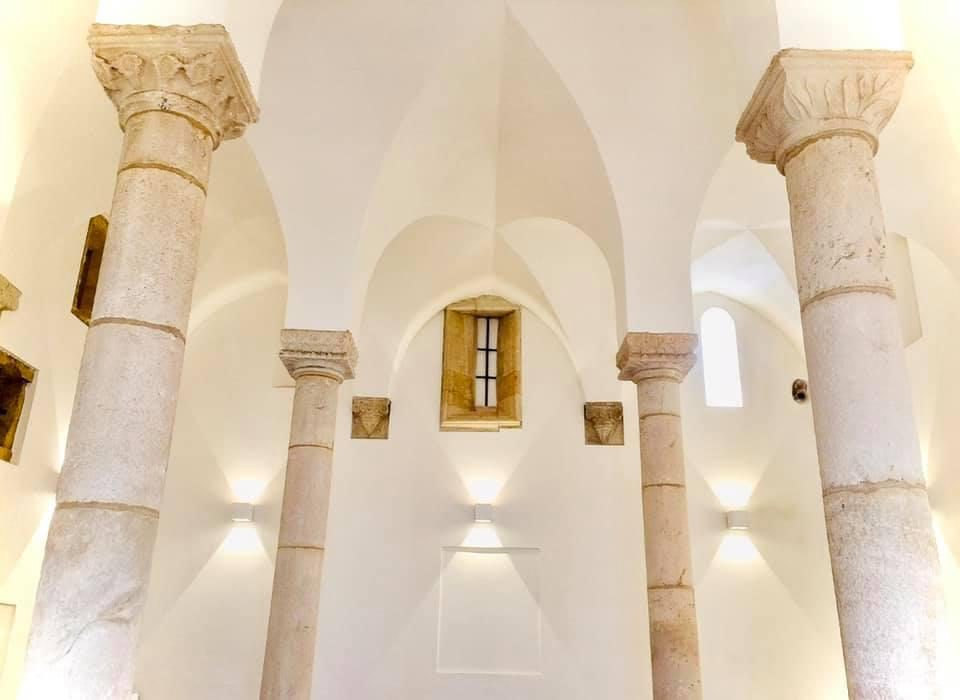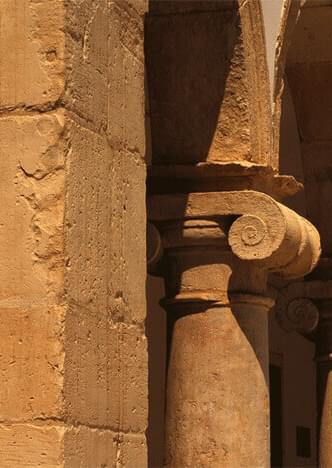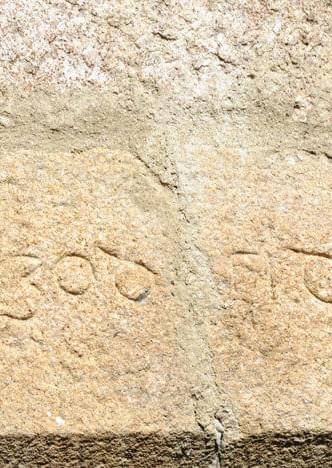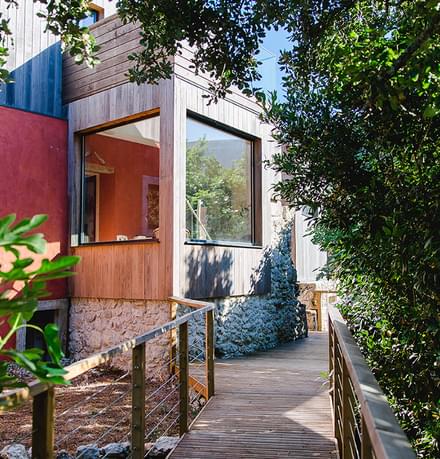It was built in the mid-15th century specifically for religious purposes, evidence of the financial resources of the resident Jewish community and its power and prosperity.
The simple, Eastern-influenced architecture of the building, (which has an almost square ground plan, groined vaults supported by four columns, capitals decorated with geometric and plant motifs and twelve corbels jutting out from the walls), is filled with symbolic references. The corbels represent the Twelve Tribes of Israel and the columns the four Matriarchs of Israel – Sarah, the wife of Abraham, her niece Rebecca, the wife of Isaac, and Leah and Rachael, sisters and the daughters of Laban. The capitals reflect the family relationship between the Matriarchs – two identical ones for the two sisters and different ones for the aunt and niece.
There are two orifices in each of the upper corners where the mouths of clay jars can be found, fitted face downwards inside the walls, which were used to enhance the temple acoustics. One is partially visible to make its purpose clearer.
In addition to its original function, the Synagogue also served as a school, assembly and court for the Jewish community in Tomar. It was closed in 1496, at the time of the Decree issued by King Manuel I expelling the Jews, after which it was turned into a prison. In the 17th century it was referred to as the Ermida de S. Bartolomeu and in the 19th century it served as a hayloft, granary, warehouse, wine cellars and store. In 1921, following a visit (1920) by members of the Associação de Arqueólogos Portugueses (Association of Portuguese Archeologists) it was classified as a National Monument.
In 1923, Samuel Schwarz, a Jewish mining engineer from Poland who had come to Portugal six years earlier, bought the Synagogue and restored it from the state of neglect into which it had fallen. He donated it to the Portuguese state (in 1939) to house the Museu Luso-Hebraico de Abraão Zacuto (Abraham Zacuto Luso- Jewish Museum).
The Museum collection consists of tombstones from various areas of Portugal. Excavation work in the annexe uncovered coins from the reign of King Afonso V (1448- 1481) –confirming the probable date of the construction of the Synagogue – ceramics for domestic use and the system used to heat the water for the Mikvah, or ritual purification bath. There are also other items associated with Jewish culture, religious items, remembrances from visitors and a documentary collection.
The patron of the Museum, Abraão Ben Samuel Zacuto (1450-1515), who was born in Salamanca, was an astronomer, mathematician, doctor and rabbi. Forced by his Jewish origins to take refuge in Portugal, he provided invaluable aid during the time of the Discoveries. King Manuel I employed him to serve the country until the expulsion of the Jews (1496). Twice rejected, he eventually died in Turkey after spending some time in Tunis, where he wrote his History of the Jewish People.
Schedule
Winter:
10:00 – 12:00 and 14:00 – 17:00
Closed on Monday
Summer:
10:00 – 13:00 and 14:00 – 18:00
Closed on Monday
Closes on January 1st, May 1st and December 25th.
